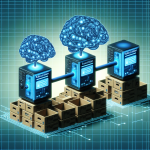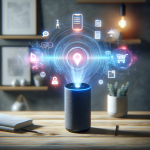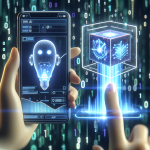Introduction to AI-Powered Customer Service
In today’s fast-paced digital world, customer service has transformed significantly thanks to advancements in artificial intelligence (AI). Among the most impactful developments are chatbots—automated messaging tools designed to simulate human conversation. These virtual assistants are rapidly becoming essential for businesses aiming to improve user satisfaction, streamline operations, and provide 24/7 service coverage.
What Are Chatbots?
Chatbots are software applications that use natural language processing (NLP) and machine learning algorithms to understand and respond to user queries in real-time. These tools can be deployed on websites, social media platforms, messaging apps, and even within voice-assisted technologies. There are two main types of chatbots:
- Rule-Based Chatbots: Operate based on scripted flows and predefined triggers.
- AI-Powered Chatbots: Leverage machine learning to continuously improve understanding and adaptability.
The Role of Chatbots in Enhancing User Experience
The integration of chatbots into customer service infrastructures offers multiple benefits that significantly enhance the overall user experience. Key advantages include:
24/7 Availability
Unlike human agents bound by working hours, chatbots provide round-the-clock assistance. This ensures users can get answers any time of day, improving response times and reducing wait periods.
Instant Responses
AI chatbots can handle thousands of queries simultaneously, responding in seconds. This capability is especially valuable for e-commerce platforms and service providers where customer impatience can lead to abandoned carts or lost leads.
Personalized Interactions
Advanced AI chatbots analyze user behavior and past interactions to tailor responses to individual needs. This personalization helps foster a stronger connection between the brand and the customer.
Consistency in Service
Unlike human agents who may provide different answers based on interpretation or emotional state, chatbots ensure uniformity in responses, ensuring all users receive accurate and reliable information.
Cost Efficiency and Scalability
From a business perspective, deploying chatbots significantly reduces operational costs. Organizations can scale up customer service efforts without the proportional increase in staffing expenses. Chatbots can handle high volumes of routine queries—such as password resets, order tracking, and FAQs—freeing up human agents to manage more complex, high-value interactions.
Challenges and Considerations
Despite their many advantages, chatbots are not without challenges. Some of the main concerns include:
- Misunderstanding User Intent: Especially in nuanced or emotionally charged situations.
- Limited Scope: Rule-based systems can falter when facing out-of-scope questions.
- User Frustration: When bots fail to resolve issues or transfer to human support effectively.
To overcome these limitations, continuous training of AI models and hybrid models—where human intervention is available when needed—are essential strategies.
The Future of Chatbots in Customer Service
As AI technology evolves, future chatbots will become even more intelligent and empathetic, leveraging real-time emotional analysis, multilingual capabilities, and seamless voice integration. The move toward proactive support—where bots anticipate issues before they arise—is a promising frontier in customer experience design.
Conclusion
Chatbots are revolutionizing customer service, offering scalable, quick, and personalized user experiences. While challenges remain, the continued advancement of AI technologies promises even smarter and more human-centric customer interactions. For businesses aiming to stay competitive and customer-focused, investing in chatbot solutions is no longer optional—it’s essential.






